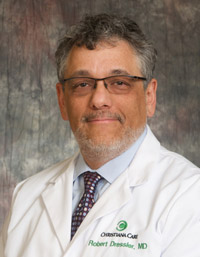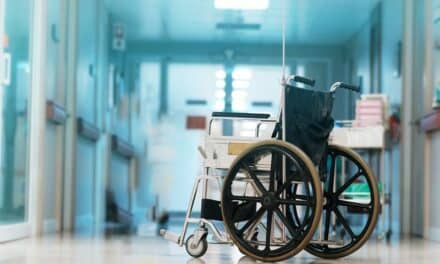How a team at one health system used evidence-based guidelines to cut costs, reduce alarm fatigue, and improve patient safety
When the Christiana Care Health System in Wilmington, Del, began drastically revamping its ordering system for cardiac telemetry in September 2012, the issue of cost savings was never even discussed. Instead, its leaders were responding to a communication failure.
One evening, the telephone lines between the health system’s two hospitals and the central monitoring station, which tracked 377 patients for abnormal heart rate or rhythm, abruptly went down. Nurses were left scrambling to decide which patients should receive the limited number of portable telemetry monitors available. At a follow-up meeting of the hospitals’ safety committee analyzing the incident, Andrew Doorey, MD, a cardiologist with Christiana Care and a clinical professor of cardiology at Thomas Jefferson University, noted that the issue was part of a much larger problem—the hospitals were monitoring far too many patients to begin with.
The Society of Hospital Medicine, in its Choosing Wisely campaign, discourages continuous telemetry monitoring outside the ICU, citing little clinical benefit. Past efforts to reduce the hospitals’ use of cardiac telemetry for non-ICU patients had failed. But Doorey’s observation led the safety committee to appoint him and Robert Dressler, MD, MBA, vice chair of the department of medicine, to fix the problem.
Their efforts led to a drastic 70% reduction in total telemetry hours, to the tune of an estimated $4.8 million in annual savings. That accomplishment recently earned the hospitals ECRI Institute’s ninth annual Health Devices Achievement award, which recognizes undertakings that increase patient safety, reduce costs, and improve technology management. Christiana Care accomplished all three. The findings were also published in the September 22, 2014, issue of JAMA Internal Medicine.
Though the project resulted in massive savings, Doorey says that benefit is secondary to the payoff in improved patient care. “There’s no question that there’s money to be saved, but it’s absolutely clear that patient care will be improved by the reduction in nurse distraction, wasted nurse time, and alarm fatigue.
A Costly Distraction
Dressler led a multidisciplinary team involving cardiologists, hospitalists, nurses, and IT and pharmacy staff, and began gathering data to assess the impact of telemetry on the hospitals’ practices and costs.
Out of 1,100 beds, approximately 355 patients were on telemetry. The team discovered that 70% of calls from the monitoring center to nurses involved technology issues such as battery replacement, motion artifacts, or lead placement; less than 1% of calls were for critical cardiac arrhythmias. A time-motion study found that nurses were spending an average of 19 minutes of administrative time per patient per day dealing with telemetry-related issues, for a daily total of 117 hours across the facility. Those frequent interruptions contributed to a general sense of alarm fatigue and increased the risk of other errors while reducing the time nurses could spend at a patient’s bedside. Costs were also significant, calculated at $53.44 per patient per day.
Prior to the redesign effort, the default duration for telemetry patients was 72 hours, but that time regularly got extended. Nurses were sometimes reluctant to terminate telemetry, and were faced with tracking down physicians to assist in making a determination, while nighttime or weekend physicians were more likely to defer the decision to the patient’s regular doctor. The obstacles contributed to an overall sense of inertia.
“We did not have a concern with our clinician’s decisions,” Dressler says. “Our clinicians and nurses are very busy providing patient care and analyzing clinical information. Altering their routine use of cardiac telemetry was not their highest priority. By hardwiring the guidelines into the ordering process, we were able to facilitate the appropriate use of telemetry by clinicians.”
Hardwiring a Solution
When the process began, cardiac telemetry was embedded in 144 order sets, most of which were not directly related to heart conditions, such as migraines. Working closely with IT, the team began overhauling the hospital’s software system to remove the telemetry option and place it in a separate order set. Physicians requesting telemetry were required to select a clinical indication, which was programmed to a specific duration based on guidelines from the American Heart Association (AHA). Doctors could still order telemetry without a specific indication by checking an “other” category, but that request had to be renewed daily.
“We wanted to preserve physician autonomy. We didn’t want to get between them, their patient, and their clinical judgment,” Dressler explains.
“We really wanted to give docs whatever they wanted,” Doorey adds. “But we weren’t going to give it to them forever.”
The team also developed a clinical decision tool to facilitate nurses’ critical decision-making and help them safely discontinue telemetry at the previously ordered time. An hour before telemetry was scheduled to cease, an automatic notification would pop up at the nurses’ station. The system guided staff through a brief list of questions, inquiring about the patient’s heart rate, blood pressure, and overall clinical status. Last was what Doorey calls the “hair on the back of the neck” moment: Have you observed any significant deterioration in the patient’s overall condition?
That phrasing led one nurse to question what exactly constituted “significant.” Couldn’t the question just ask about deterioration?
“It was a great point,” Doorey says. “Deterioration was deterioration. So we took out the word ‘significant.’?”
A single response raising a potential clinical concern was sufficient to prompt nurses to consult with a physician to address it, along with consideration for extending the telemetry duration. But those cases have been relatively rare. Instead, the total number of orders dropped 40%, while duration dropped 47%. With the two factors combined, total telemetry hours were reduced by 70%.
A Team of Allies
Previous reform efforts had employed a top-down approach that cardiologists resisted. They resented what appeared to be administrative attempts to interfere with patient care in order to save money.
As the clinical lead, Doorey recognized that the effort would fail unless he had cardiologists on board, so he approached them first. “We were careful never to use the words ‘money’ or ‘cost,’?” he says. Instead, he cited the AHA recommendations, framing the discussion in terms of clinical benefits.
“Cardiologists are very evidence-based,” Doorey continues. “They approved it unanimously.” With their support in hand, he and Dressler went out to sell other groups on the concept.
Throughout the process, they consulted with stakeholders to ensure their buy-in and support. The nursing staff proved to be key allies. “We wanted to show why telemetry was bad. Some people thought there were no downsides, that it was just an extra set of eyes watching the patient. This is where the nurses were extremely helpful,” Doorey says. “We thought they’d object to the changes we were proposing. On the contrary, we found that they hated the near-universal telemetry we were trying to eliminate.”
Nursing staff knew from experience that patients on telemetry often got tangled up in wires or tripped over them while walking. For elderly or postsurgical patients, the 2-pound units could inhibit mobility and change their center of gravity, leading to falls. Confronted with evidence that excessive telemetry was not only not helping their patients, but in some cases actually hurting them, many doctors were quick to sign on.
The campaign revealed a challenge no doubt faced by many hospitals in their reform efforts: Prior to the project, nobody wanted to be the only physician whose patients weren’t on telemetry.
“The changes impacted all clinicians across the board,” Dressler says. “This made it easy because we said, ‘This is what the evidence is; let’s follow the guidelines.’ Since everybody was put into that situation, the herd mentality made adoption easier.”
A Model for Safety
In addition to calculating cost savings, Dressler’s team has closely tracked the data for safety outcomes. Since reducing telemetry, Christiana Care has seen no increase in code blue or rapid response calls among non-ICU patients. Nurses have more time on their hands to attend to real patient needs, and Doorey says they break into smiles whenever telemetry comes up, saying it’s made their lives easier.
Jim Keller, vice president of health technology evaluation and safety for ECRI Institute, will travel to the facilities before the year’s end to present the award. Among the 20 or so submissions ECRI receives each year from Health Device member organizations, a key component is not only tackling an important issue, but measuring the effectiveness of the implemented solution.
Christiana Care’s application excelled because it demonstrated a simple, direct problem-solving method that is easily reproducible for other hospitals. “You have to go through the work and the effort they applied to do this kind of project, but it’s fairly straightforward. This is an elegantly simple design to minimize an important patient safety concern,” Keller explains.
When they first started the project, Doorey was told repeatedly it would never work. As a result, he says, “we stood behind the guidelines.” He emphasized to stakeholders, “This is evidence-based medicine. It’s not a homegrown idea. This is the best evidence base we have, and this is what we should do.”
Now that monitoring patients is no longer the norm across the facilities, it’s been surprisingly easy to make the changes stick, Doorey says. “If you get another unmonitored patient, it’s not a big deal. It kind of redefines the standard of care in our hospital and our community.”
Jenny Lower is 24×7’s associate editor. Contact her at [email protected]






